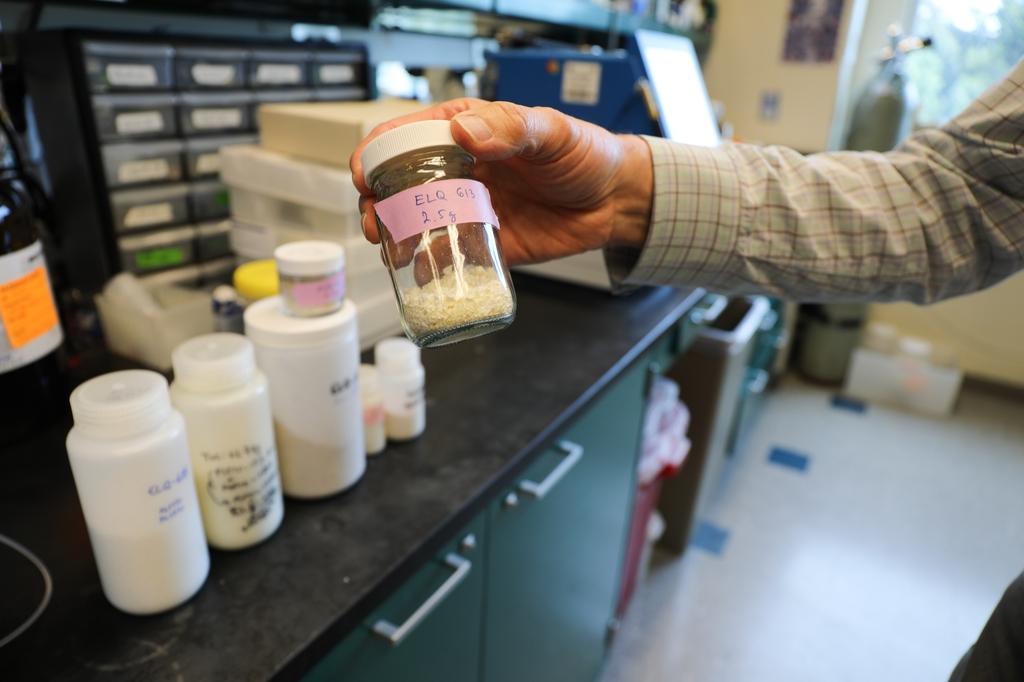
For more than a decade, a small group of dedicated researchers at Oregon Health & Science University have pursued a disease so deadly that it affects the fates of entire nations, while it preys particularly upon the weak and the very young.
Now, after the researchers’ single-minded pursuit of an unusual approach to combat malaria drew the notice of other experts around the country, they are on the brink of a breakthrough.
It’s one that could save the lives of tens of thousands of children and adults every year — if not more than that.
The team led by Michael Riscoe joined with researchers at the Harvard T.H. Chan School of Public Health and the Southwest Research Institute in Texas to publish their latest results in the respected journal Nature.
The researchers found that malaria-infected mosquitoes that landed on the surface of materials treated with compounds spearheaded by Riscoe’s team were cured of the parasite after absorbing the compounds through their legs.
Instead of treating humans infected with malaria, in other words, the approach treats the insects carrying the parasite.
And they intend to use bednets — commonly used in the Southern Hemisphere to protect people from being infected with malaria — to do it.
Rare in the United States, malaria infects millions every year, particularly in sub-Saharan Africa, leading to a yearly death toll of about 600,000. The parasite’s symptoms start with fever and can progress to include vomiting, diarrhea, hemorrhaging and organ failure.

Federal funding key
The research is notable not just because of its potential life-saving impact on a deadly disease, but because it relies on federal research funding that is currently being targeted in Washington, D.C.
That federal funding “has made every difference” in the team’s work, said Michael Riscoe, a professor of molecular microbiology and immunology in the OHSU School of Medicine. “We all feel so fortunate to be working on this project because of its vast potential to save lives.”
The research comes at a time when the Trump administration wants to cut research funding administered by the National Institutes of Health, like the funding that Riscoe and his fellow researchers have relied on. Oregon Health & Science University leaders have called the cuts an existential threat to their research mission.
The bednet team’s current grant covers about $600,000 in costs this year. It’s not the kind of funding that can easily be replaced.
While other diseases have major moneymaking potential for pharmaceutical companies, malaria largely afflicts poor people who can’t pay a lot for costly drugs.
“It really is a disease that affects some of the poorest countries in the world, poor as far as financial resources are concerned. And so there isn't a real profit motivation for large pharmaceutical firms,” Riscoe said. “There isn't the promise that they will get a return on their investment.”
As a result, it’s academic and governmental labs driving much of the work on malaria. Despite the great promise of Riscoe’s work, after more than a decade of advances they still lack a major pharmaceutical company sponsor.
“We certainly hope that a large pharmaceutical firm will step in and take over the project,” he said. “Ultimately, that would have to happen for this to get produced on a global scale and to have the impact on human health that we see as the great potential for this project.”
New approach
In the past, efforts to battle malaria have focused on treating and curing the 600,000 children and others who die from malaria across the globe each year after being bitten by mosquitoes.
Those efforts reduced the global death rate, but those improvements have leveled off in recent years.
Another tack taken over the years has been to try to kill or thin populations of mosquitoes before they infect anyone. That approach, however, has its own challenges, including harmful chemicals and the possibility of destabilizing the ecosystem.
In contrast, the dynamic that Riscoe and his colleague are trying to leverage is deceptively simple: Mosquitos seeking a bloodmeal tend to hover around bednets and walk on them looking for holes to get at the sleeping humans within.
The humans, in effect, serve as bait — so that the mosquitoes can be treated.
A chance encounter
The alliance between universities came together almost by accident. Six years ago, Riscoe spoke at a conference where the Harvard researcher focused on bednets, Flaminia Catteruccia, was also speaking.
Riscoe gave a presentation about his team’s work on a promising anti-malaria compound. Catteruccia spoke about her team’s focus on bednets to deliver anti-malarial agents.
They had dinner afterward and have been working together ever since, roping in their colleagues as well as Mike Rubal, a chemical engineer at SWRI.
Always good for networking, it turns out these conferences can be good for science as well. This was a “rather spectacular example of just how important they can be,” Riscoe said.
“Flaminia had the idea, you know, why do we have to kill the mosquito? The mosquito is just simply transmitting the disease, so why ruin an entire ecosystem? Why not instead just use anti malarial drugs like we do in people and cure the mosquitoes of their malaria infection before they infect people?”
Singular focus on a century-old compound
What drew Catteruccia’s attention was that Riscoe’s team, spread between OHSU and the VA Hospital, had developed novel techniques to develop and study variants of a promising but largely forgotten anti-malarial compound first identified nearly a century before.
But finding a way to use it with humans has been a slow process.
When it comes to malaria, forgetting to take a pill to prevent it — the first approach considered by the team — could just mean the parasite entering a person’s body isn’t killed, but instead evolves to get stronger.
So the Riscoe team has focused instead on an intramuscular injection that could last six months.
But that work has been slow-going, and human trials to win federal approval are a long way off.
The other obstacle in trying to treat malaria is that to be embraced in financially challenged economies, any approach needs to be cheap.
New approach could be cheap — and quick
In recent years, the Riscoe team has singled out two versions of the compound that would be very inexpensive to mass produce. They could both be applied to bednets simultaneously: If one of them doesn’t infect the mosquito and kill the parasite, the other will.
“They are much simpler to make. They're less expensive to produce, and it will be easier to produce them on an industrial scale by the ton,” he said.
While efforts involving vaccines and genetic research to combat malaria regularly make headlines, the idea of instead using bednets to go after the parasite in mosquitoes presents several advantages, according to Riscoe.
Perhaps the most immediate: it allows the researchers to bypass the lengthy multi-stage process of efficacy and safety testing that would be necessary to administer a new drug to people.
“The hope is that later this year, those mosquito bednets will go into field trials in Africa,” Riscoe said.